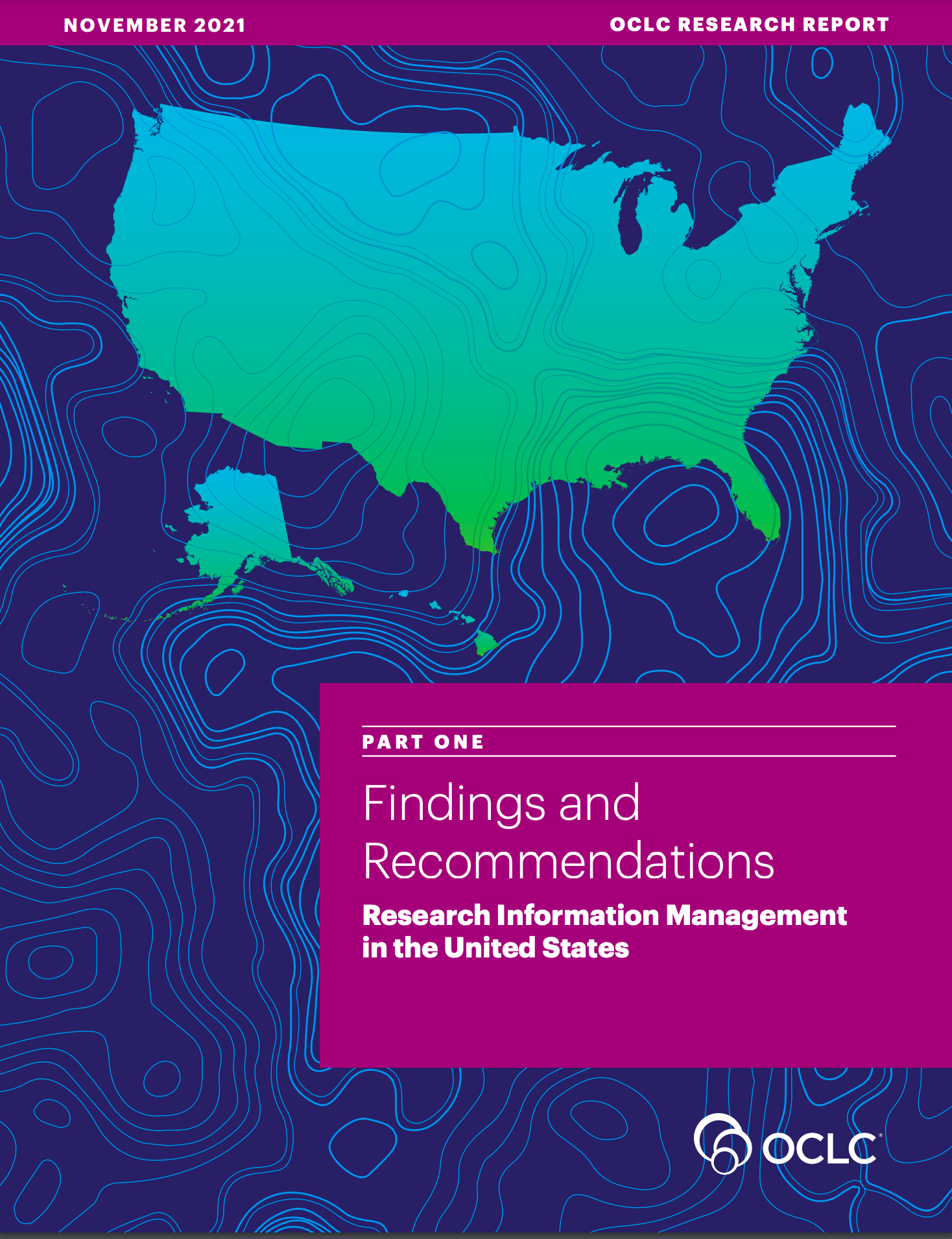Research Information Management at US Institutions
Research information management (RIM) is a rapidly growing area of investment in US research universities, capable of advancing research, supporting strategic decision making, and streamlining administrative workflows. In 2020-21, OCLC Research convened a team of current and past RIM system managers to examine the RIM practices at US institutions.
This project seeks to demystify RIM practices in the United States by offering a more comprehensive and strategic view of the practices, stakeholders, and infrastructures, and builds upon previous OCLC Research on RIM practices, including the 2018 report, Practices and Patterns in Research Information Management: Findings from a Global Survey produced in partnership with euroCRIS.
To better understand the complex heterogeneity of US practices, this project explores the RIM practices at five US research universities:
- Penn State University
- Texas A&M University
- Virginia Tech
- UCLA (including University of California system-wide practices)
- University of Miami
These institutions were selected because they represent a diversity of uses, stakeholders, products, and scale. Information was collected in 23 interviews with 39 individuals and combined with a review of the existing literature.
The principal output of this project is the two-part OCLC Research report series Research Information Management in the United States, published in Fall of 2021.
- Part 1 provides a synthesis of the US landscape drawn from the case studies, documenting RIM use cases, a framework for understanding RIM system components, and concise recommendations for institutional leaders.
- Part 2 provides detailed documentation of the RIM practices at the case study institutions, including the history, goals, use cases, scope, and stakeholders.
Additionally, this project seeks to establish a unified definition of research information management that embraces the disparate and siloed uses so prevalent in the United States, a necessary first step toward the development of a cross-functional, collaborative, and vendor-agnostic community of practice in the United States.
Outputs
Research Report
-

Research Information Management in the United States
11 November 2021
Rebecca Bryant, Jan Fransen, Pablo de Castro, Brenna Helmstutler, David Scherer
This two-part report series provides a first-of-its-kind documentation of research information management (RIM) practices at US research universities, presenting a thorough examination of RIM practices, goals, stakeholders, and system components.
Project Team
Rebecca Bryant, PhD, OCLC Research
Jan Fransen, University of Minnesota
Pablo de Castro, Strathclyde University & euroCRIS
Brenna Helmstutler, Syracuse University
David Scherer, Carnegie Mellon University